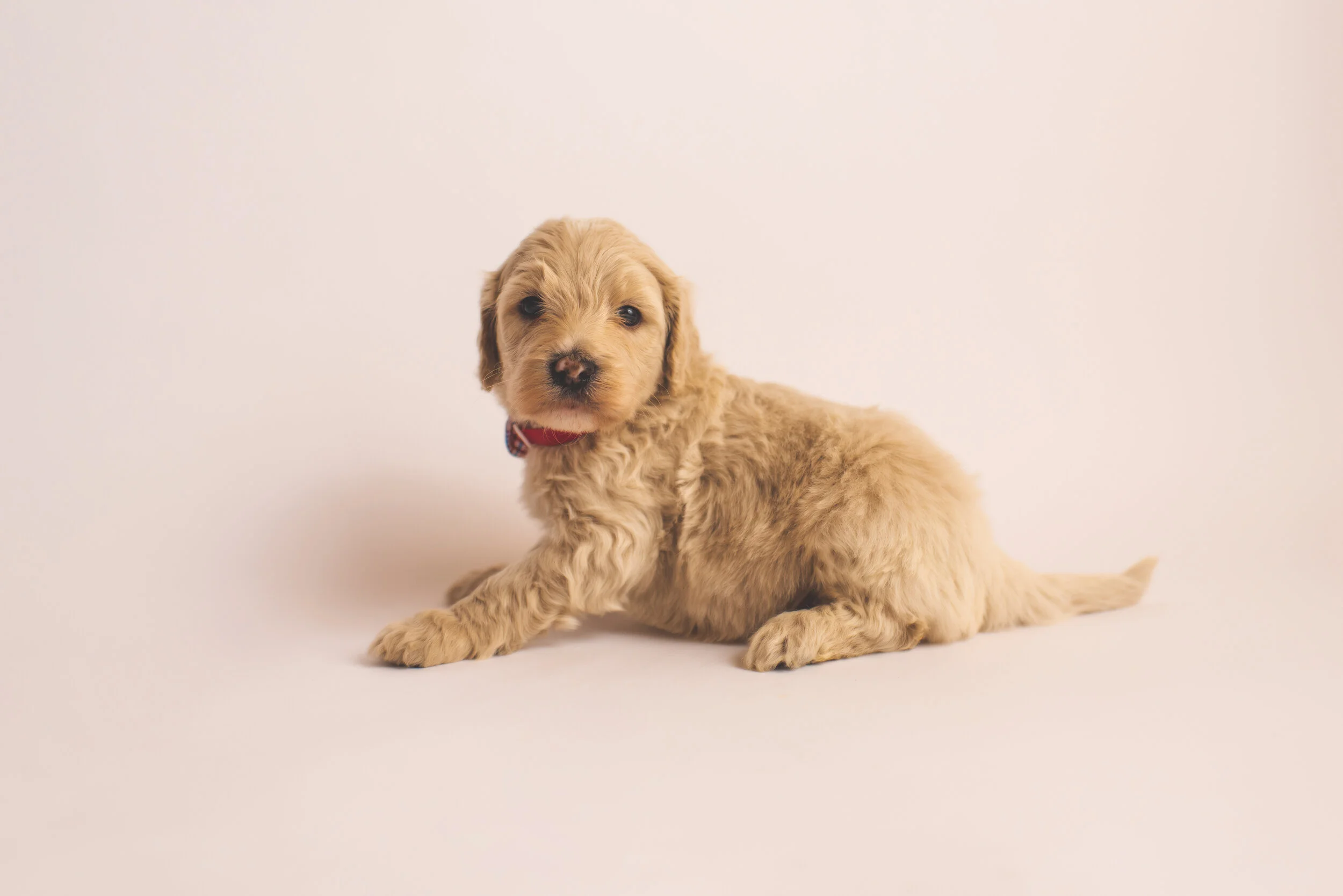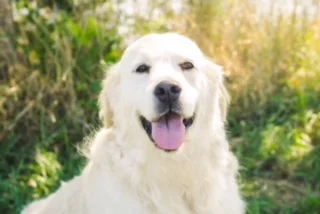FAQ
1.) How many generations of Goldendoodles are there, and what is each generation comprised of?
I frequently get asked about Goldendoodle Generations so here is a chart with the proper Mendellian Filial Labeling. This chart simply tells buyers the technical generational name, and NOT about how hypoallergenic a dog may be. Buyers are sometimes misinformed by outdated articles, which state, "F1Bs are best for people with allergies.” This statement is incredibly inaccurate and misleading. Knowing that a dog is an F1B or an F4 tells you NOTHING about the dog beyond its pedigree. Coat testing is the only indicator on figuring if a dog will be hypoallergenic, which means there is a lower likelihood of an allergic reaction. Therefore, an F1B, F2B, or Multigenerational are all equally great choices of hypoallergenic generations when using a Breeder who coat tests.
Besides a dander allergy, there are two other factors to consider which may cause an allergic reaction, and those are saliva and urine. If someone has a saliva or urine allergy, a Goldendoodle is no less likely to cause an allergic reaction than any other dog or breed of dog.
We genetically test our breeding dogs to ensure that the parents carry the genes necessary to produce low to non-shedding dogs with the traditional Goldendoodle look; eyebrows, beard, and mustache. Cherry Lane Doodles only breeds Multigenerational Goldendoodles.
F1= First Generation Golden Retriever x Poodle
F2-= Second Generation F1 x F1
F1B-= (Also technically an F2 as it is two filial generations removed from original purebreds). F1 x Poodle, F1 x Golden Retriever
F3= Third Generation or Multigen F2 x F1, F2 x F2, F1B x F1, F1B x F2
F2B = (Also technically an F3 as it is 3 filial generations removed from original purebreds). F2 x Golden Retriever or Poodle, as long as the two back-crossed dogs were the same breed.
F4- Multigen, any cross of the two breeds that is not included in any of the above generations
Information provided by Rachael Elizabeth (Bearded Retriever Coat and Color Genetics)
2.) What is the difference between an English Retriever and a Golden Retriever?
Please refer to the chart below provided by the American Kennel Club. Many breeders state that English Retrievers are calmer than Golden Retrievers. After having both Golden Retrievers and an English Goldendoodle, I can agree with this statement.
London, Lucy's mom, English Cream Retriever
3.) Do you offer a health guarantee?
Yes! We offer a 2 year congenital life threatening health guarantee.
4.) How soon should I take my puppy to the vet?
Your puppy should be taken to the vet within three days after your purchase to validate the health guarantee. You should have a vet lined up prior to purchasing your puppy.
5.)Do you recommend crate training?
Absolutely! Purchase a crate large enough to allow your puppy room to grow! This is a very smart breed and you will be surprised how quickly they learn with effective crate training.
6.) Why is it important to train a puppy?
Goldendoodles aim to please and thrive in a home where there are rules and boundaries set for them. They learn quickly with consistency, and both the owner, and Goldendoodle, will be happier as a result. We recommend basic training classes for your puppy. We've been told that Goldendoodles are usually the smartest in the class!
7.) What does the nickname "Teddy Bear" mean?
English Retrievers have wider muzzles, as opposed to Golden Retrievers, giving them a teddy bear look. Goldendoodles with English Retriever ancestry can inherit this wider muzzle look giving them the resemblance of a "Teddy Bear" that everyone loves!
8.) How many colors and coat styles do Goldendoodles come in?
Click here to see all of the different colors, and coat styles, Goldendoodles can have!
9.) What does genetically straight hair mean, and will genetically straight hair doodles shed more than curly haired doodles?
Goldendoodles can carry two curl copies which results in genetically curly haired doodles (+/+), they can also carry one curl gene and one straight gene resulting in wavy haired doodles (+/-), or they can have no curl copy resulting in straight haired doodles (-/-). The curl gene has no affect whatsoever on shedding. The two genes responsible for shedding are the furnishing gene, and the long hair gene. Therefore, when genetically tested, a straight-haired doodle would not shed any more or any less than curly haired doodle. We genetically test all of our parent dogs to give us a great indication of what we can expect to produce in each litter.
The picture on the left side is of a genetically straight-haired puppy.
The picture in the middle is of a genetically wavy-haired puppy.
The picture on the right is of a genetically curly haired puppy.
Genetically Straight Hair
Genetically Wavy Hair
Genetically Curly Hair






